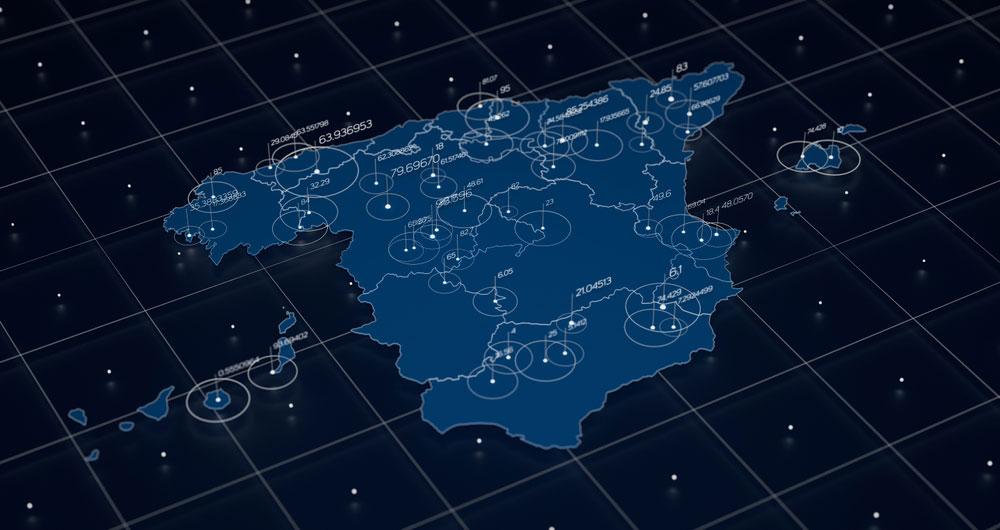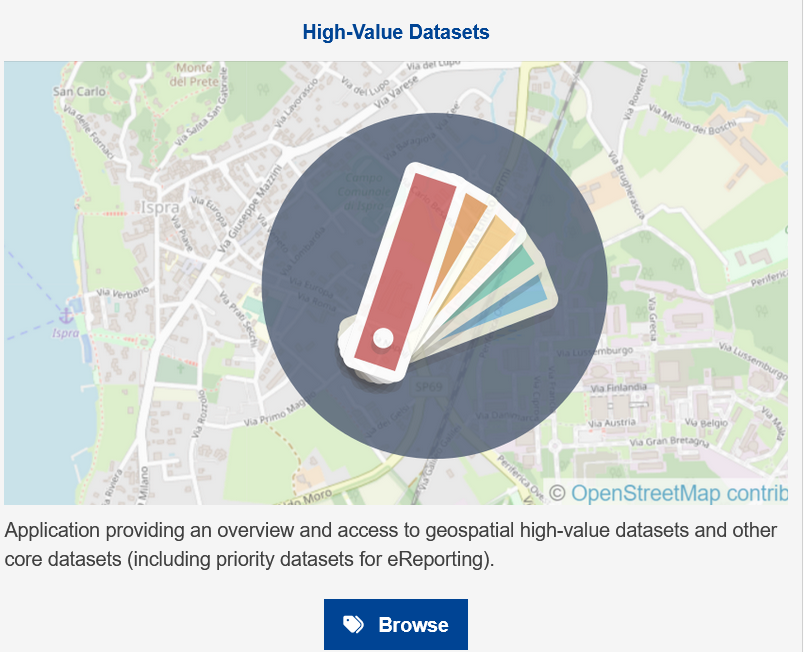
For some time now we have been hearing about high-value dataset, those datasets whose re-use is associated with considerable benefits for society, the environment and the economy. They were announced in Directive (EU) 2019/1024 of the European Parliament and of the Council of 20 June 2019 on open data and the re-use of public sector information, and subsequently defined in Commission Implementing Regulation (EU) 2023/138 of 21 December 2022 establishing a list of specific high-value datasets and modalities for publication and re-use.
In particular, six categories of dataset are concerned: geospatial, Earth observation and environment, meteorology, statistics, companies and company ownership, and mobility. The detail of these categories and how these datasets should be opened is summarised in the following infographic:
Click on the image or here to expand and access the accessible version
For years, even before the publication of Directive (EU) 2019/1024,Spanish organisations have been working to make this type of datasets available to developers, companies and any citizen who wants to use them, with technical characteristics that facilitate their reuse. However, the Regulation has laid down a number of specific requirements to be met. Below is a summary of the progress made in each category.
Geospatial data
For geospatial data, the implementing regulation (EU) 2023/138 takes into account the categories indicated in Directive 2007/2/EC of the European Parliament and of the Council of 14 March 2007 establishing an Infrastructure for Spatial Information in the European Community (INSPIRE), with the exception of agricultural and reference parcels, for which Regulation (EU) 2021/2116 of the European Parliament and of the Council of 2 December 2021applies.
Spain has complied with the INSPIRE Directive for years, thanks to the Law 14/2010 of 5 July 2010 on geographic information infrastructures and services in Spain (LISIGE), which transposes the Directive. Citizens have at their disposal the Official Catalogue of INSPIRE Data and Services of Spain, as well as the catalogues of the Spatial Data Infrastructures of the Autonomous Communities. This has resulted in comprehensive geographical coverage, with exhaustive metadata, which complies with European requirements.
- You can see the dataset currently published by our country in this category on the INSPIRE Geoportal. You can read more about it in this post.
Earth observation and environmental data
For the category of Earth observation and environment data, both the environmental and climate datasets listed in the annexes of the INSPIRE Directive and those produced in the context of a number of legal acts known as priority data, detailed in the Implementing Regulation, are taken into account.
As with the previous category, the fact of having the LISIGE law, which develops INSPIRE and goes further in the obligations set out, has meant that many of these datasets were already available prior to the Implementing Regulation.
- You can see the dataset currently published by Spain in this category in the INSPIRE Geoportal and read more about its publication in Spain here.
Meteorological data
The meteorological thematic category encompasses collections of data on observations measured by various elements, such as weather stations, radars, etc.
In Spain, the State Meteorological Agency (AEMET) has a portal, AEMET OpenData, which was a pioneer in Europe in terms of the availability of open meteorological data. In this portal we find that most of the high-value datasets are already available, grouped in the 14 categories of AEMET OpenData. Work is ongoing to expand the available datasets, their granularity and other technical aspects to further enhance their usability.
- You can see a more detailed review of the current status of the publication status of the datasets in this category in this post.
Statistical data
High statistical value data are covered by a number of legal acts detailed in the Annex to the Implementing Regulation. This category is based on the European Statistical System, which ensures quality and interoperability between states.
In line with this system, Spain has the National Statistical Plan. This plan is developed and implemented through specific annual programmes detailing statistical operations, their objectives, bodies involved and budget appropriations, many of which are aligned with the statistical packages detailed in the Implementing Regulation.
- You can see the detail of the equivalence between the high value data and the datasets published as the result of the National Statistical Plan in this article. You can also see the details of the data published by the National Statistics Institute (INE) here.
Company data and company ownership
Company and company ownership data refer to datasets containing basic company information, including company documents and accounts.
In Spain, information from the Official Gazette of the Mercantile Registry (BORME in Spanish acronyms) is offered openly, with temporal coverage since 2009. However, work continues on opening up more datasets in this category.
Mobility data
The mobility category includes datasets falling under the domain "Transport Networks", included in Annex I of the INSPIRE Directive, together with those referred to in Directive 2005/44/EC of the European Parliament and of the Council of 7 September 2005 on harmonised River Information Services (RIS) on inland waterways in the Community.
As was the case for other categories where high value dataset were already covered by the INSPIRE Directive, Spain has a large amount of dataset available on the Geoportal of the Spatial Data Infrastructure of Spain (IDEE) and the infrastructures of the Autonomous Communities and the infrastructures of the Autonomous Communities.
- You can see the dataset published in the INSPIRE Geoportal and the details of the current situation in this content.
The large amount of dataset published reflects our country's continued commitment to transparency and access to high-value dataset. This is an ongoing effort, the result of the collaboration and involvement of various organisations. Work continues to provide the public with as much quality data as possible.



